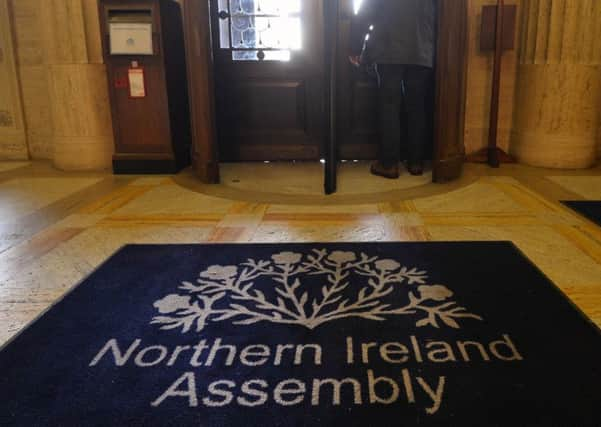RHI scandal: Even as it closed disastrous scheme, DETI claimed it was a success


Extraordinarily, the department claimed that the financially catastrophic -–and as yet unexplained – spike in applications just before it introduced cost controls was part of that “success”.
In disclosures which raise fresh questions about the candour with which the Department of Enterprise, Trade and Investment (DETI) dealt with legislators, the News Letter can reveal that the department also gave MLAs questionable information about the way in which the RHI scheme was funded.
Advertisement
Hide AdAdvertisement
Hide AdDETI, which has now been rebranded as the Department for the Economy, submitted the comments to MLAs in a document known as a Regulatory Impact Assessment and also a ‘rural proofing’ document which accompanied the then minister Jonathan Bell’s legislation to finally close the scheme last February.
By that stage it was well known within the department – and had been known for around a year – that the scheme was going to cost other public services heavily and that part of the reason for that was that it had chosen to strip out the cost controls in the Great Britain scheme when the Stormont version was set up in 2012.
However, the department’s Regulatory Impact Assessment twice told MLAs that “the RHI schemes have been very successful” before going on to set out the huge spike in applications in autumn 2015 when 1,000 applicants piled in and the scheme’s closure was delayed – allegedly due to a DUP Spad.
However, referring to the spike, it described the situation as a “success”, saying: “This success has placed significant pressures on the available budget.”
Advertisement
Hide AdAdvertisement
Hide AdIn the rural proofing document, DETI – at that point under Mr Bell – said that “the schemes have been extremely successful”.
And, despite by that stage two whistleblowers having contacted either DETI or Stormont Castle several times between them to warn that the scheme was being abused, there is no mention of the potential that some of the claims are fraudulent – and therefore could be stopped.
Nor were there any suggestions of an attempt to recoup any taxpayers’ money.
However, the Regulatory Impact Assessment does touch on what now seems astonishing – the possibility that the RHI scheme could be reopened after a period of closure.
Advertisement
Hide AdAdvertisement
Hide AdIt said: “Suspension leaves open the possibility of reintroduction relatively quickly if the budget position changes.”
Regulatory impact assessments are meant to set out the costs and benefits of the proposal and the risks of not acting, so as to help deliver better regulation.
Although Mr Bell’s signature is not on the document placed on the Department for the Economy website, there is a space on it for the signature of the person who approved it.
It is the sort of document which a minister would be expected to see because it is meant to be a key part of informing the minister about the implications of the legislation which he is about to propose to the Assembly.
Advertisement
Hide AdAdvertisement
Hide AdOne of the core reasons for a RIA is “transparency”, something which has been stressed by the National Audit Office.
Note shows DETI knew it shared ‘risk’ of scheme from the outset
The document laid before MLAs gives the impression that the Treasury changed its position on how the RHI scheme would be funded, contributing to the budgetary crisis – even though that was not the case.
It had in fact been a failure of DETI to understand the Treasury’s instructions which contributed to the green energy scheme running out of control.
Advertisement
Hide AdAdvertisement
Hide AdThe February 2016 Regulatory Impact Assessment said: “This increase in committed RHI payments coupled with recent changes to the arrangement for budget allocations means that the NI’s available (Annual Managed Expenditure) AME funding allocations from 2016/17 onwards will be exceeded.
“The budget issue must be addressed and the proposed legislation establishes a mechanism under which the RHI schemes can be suspended in the absence of available funding.”
However, internal departmental correspondence from the same period shows that civil servants and the minister were by then well aware of how the scheme was funded.
The then minister Jonathan Bell’s request to Stormont Castle to allow him to urgently close the scheme – which was sent before the regulatory impact assessment was submitted to the Assembly – set out clearly the nature of the funding from the outset.
Advertisement
Hide AdAdvertisement
Hide AdThe note, which has been released in recent weeks by the current minister, Simon Hamilton, said: “When the scheme was first introduced in 2012, HMT confirmed that RHI spending would not be treated as conventional AME, where the Exchequer takes on all risks.
“Instead, a risk-sharing arrangement was introduced whereby, should RHI spending in one year exceed the allocated budget, NI would need to repay this in future years.”